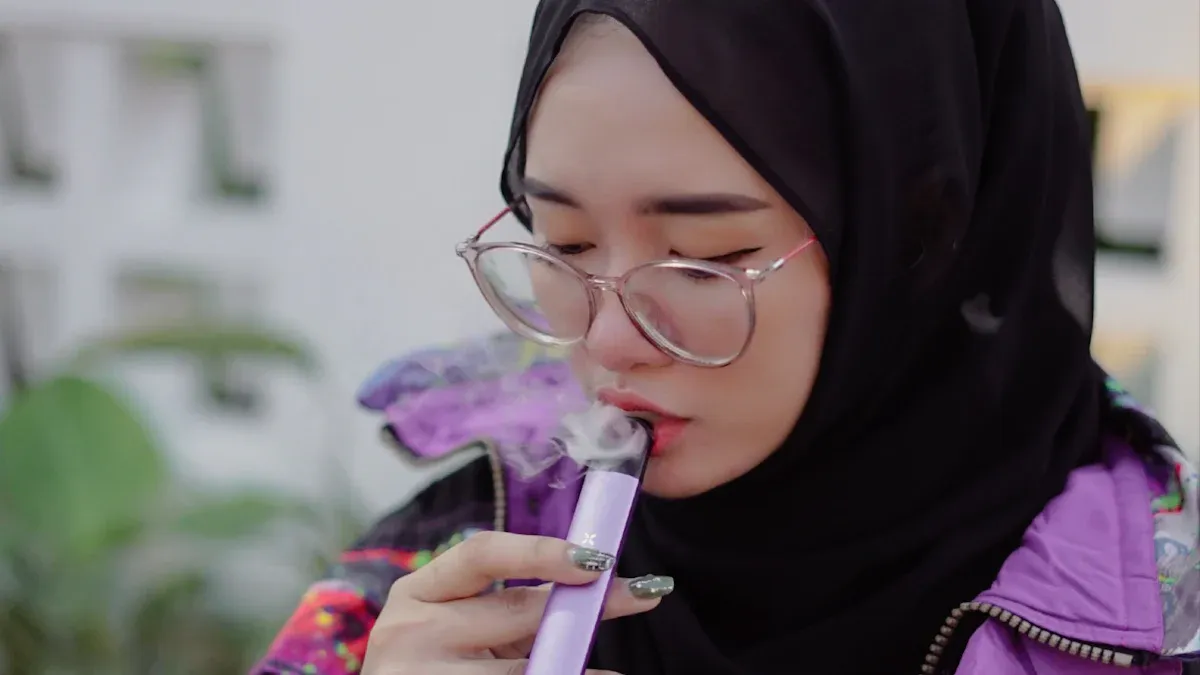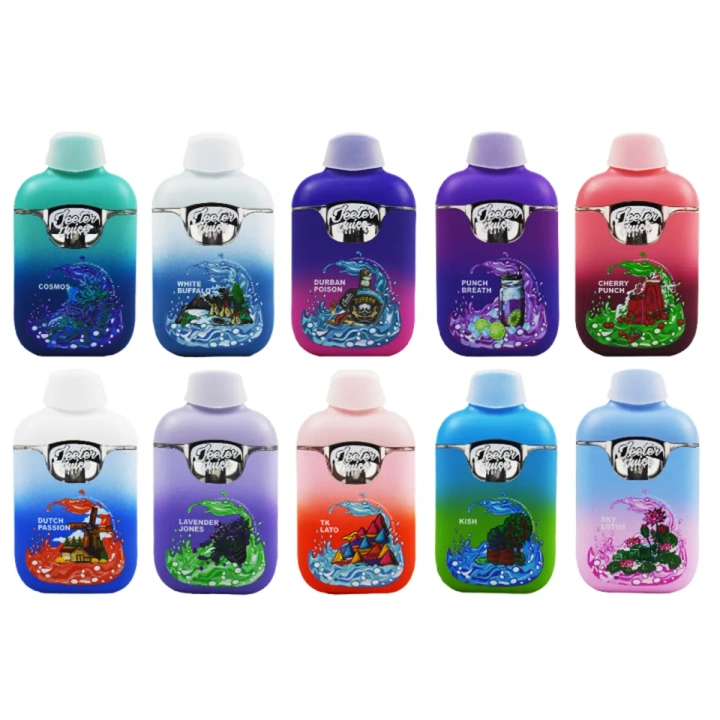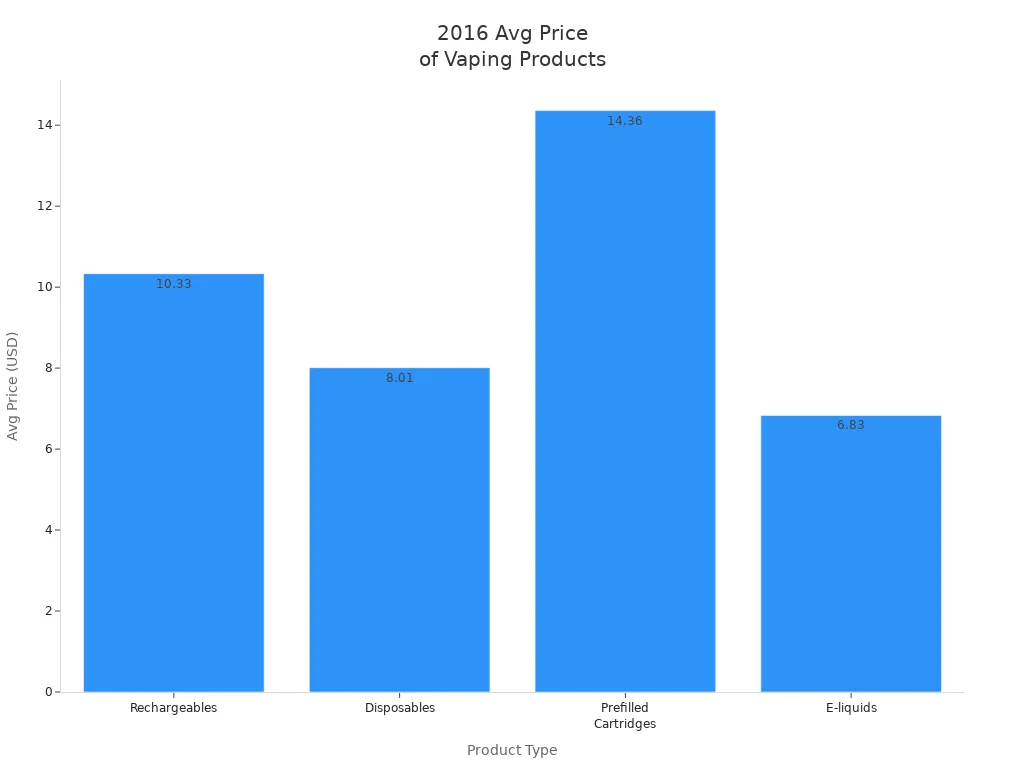Why do people choose vaping?

People choose vaping for various reasons, making it increasingly popular, especially among young people. Many people choose vaping because they believe it is safer than regular cigarettes. This trend highlights several reasons why people choose vaping, including social pressure, tasty flavors, and perceived health benefits.
Key Takeaways
Many people begin vaping due to social factors. Peer pressure and social media make vaping seem cool and normal for young people.
The many fun flavors and the enjoyable feeling of vaping draw in users and keep them engaged.
People often think vaping is safer and cheaper than smoking. Some use it to help stop smoking, but vaping still has health risks and addiction issues.
Reason 1 - Social Factors in Vaping

Peer Pressure and Trends
Peer pressure is a big reason why many young people vape. When friends vape, others feel they should join in. Studies show that teens with vaping friends are more likely to try e-cigarettes. The social scene can make vaping feel like a normal thing to do or a way to belong.
Key Findings:
Peer pressure makes it more likely for teens to try and use e-cigarettes often.
Having friends who vape and seeing it as okay are linked to starting and using e-cigarettes more among teens.
Vaping is often seen as cooler than smoking regular cigarettes. Many young people think vaping is trendy and fits in with their friends. This idea is supported by the fact that e-cigarettes come in many flavors and stylish designs, which attract younger users.
Social Media Influence
Social media makes vaping seem more social. Many young people spend lots of time on Instagram, Snapchat, and TikTok, where they see vaping as normal. Influencers and celebrities often show vaping as fun, which can change how young people think about it.
A study of teens in Florida found that using social media more is linked to trying e-cigarettes. The study showed that Snapchat is especially connected to starting vaping. This exposure not only makes vaping seem normal but also creates a culture where it feels like a regular part of life.
Visual Appeal:
Vaping posts often show colorful devices and tasty flavors, which catch attention and make people curious. Unlike cigarette ads, which often warn about health, vaping content focuses on fun and lifestyle.
The way vaping is shown on social media is very different from smoking. A recent study found that e-cigarette posts are mostly colorful and aimed at marketing. In contrast, cigarette posts often show smoking as part of everyday life, with more direct images of smoking. This difference helps make vaping seem normal for young people.
Aspect | E-cigarette Posts on Instagram | Cigarette Posts on Instagram |
|---|---|---|
Marketing Intent | Most (56.3%) are seen as marketing | Less focused on marketing |
Brand Portrayal in Content | 63.0% show the brand in photos/videos | 15.8% show the brand |
Portrayal of Daily Life | 41.3% show daily life | 73.2% show daily life |
Human Portrayal | 43.7% include people | 80.3% include people |
Depiction of Act (Vaping/Smoking) | 21.3% show vaping behavior | 67.1% show smoking behavior |
Social Media Presence of Brands | 91.4% of top e-cigarette brands are on social media | 95.5% of top cigarette brands are not on social media |
User Engagement | Similar likes; e-cigarette posts get more comments | Similar likes; fewer comments |
This table shows how vaping is marketed and seen differently than smoking, making it more appealing to young people. The social side of vaping, along with peer and social media influence, strongly encourages young people to use e-cigarettes.
Reason 2 - Flavor Appeal and Enjoyment

Unique Flavor Options
One of the main reasons people vape is the many flavors. Traditional cigarettes have few tastes, but e-liquids have many choices. Young people often find these fun flavors hard to resist. Surveys show that more than 84% of young e-cigarette users would not vape without flavors. Some popular flavors are Iced Mango, Banana Ice, caramel cappuccino, and vanilla cupcake. These flavors attract new users and keep them coming back.
Popular Flavors Among Youth:
Iced Mango
Banana Ice
Lush Ice
Blue Dream
The many flavored products help vaping become popular with teens. Many young people think these flavors are made for them, making vaping feel more fun and relatable.
Vaping for Pleasure
Vaping is not only about flavors; it also brings joy. Many users say they vape to relax or deal with stress. Vaping can release dopamine, which makes people feel happy and excited. About 37.2% of young vapers say taste is their main reason for using e-cigarettes.
Vaping can also be a social activity. Users like to show tricks or share flavors with friends, making it more enjoyable.
This mix of flavor and fun makes vaping a popular choice. As more exciting e-liquids come out, the appeal of vaping for taste and enjoyment will likely grow even more.
Reason 3 - Health Perceptions and Harm Reduction
Perceived Safety Compared to Smoking
Many people think vaping is safer than smoking. This belief leads many users to pick e-cigarettes instead of regular cigarettes. Here are some common thoughts among users:
Many users believe vaping is safer than smoking.
They say their health gets better, like improved asthma and easier breathing.
Some users cough less and feel more energetic after switching to vaping.
However, more people now think vaping is just as harmful or worse than smoking.
Even with these mixed views, nicotine addiction is still a worry for both vaping and smoking. Users often forget that both e-cigarettes and cigarettes have nicotine, which is very addictive. Interestingly, some e-cigarette users might take in more nicotine than regular smokers because of stronger cartridges or device settings.
Experts question the idea that e-cigarettes are "95% safer" than regular cigarettes. They say this number is not reliable because there isn’t enough long-term data. Research shows that e-cigarette aerosols can have substances that harm the lungs when inhaled. While vaping might be less harmful than smoking, it still has risks.
Vaping as a Cessation Tool
Many smokers try vaping to help them quit. Almost half of current smokers tried to quit in the last year. Using e-cigarettes daily is linked to better quitting rates. More than half of daily e-cigarette users said they stopped smoking in the last five years. This shows that vaping can help some people quit smoking.
However, it’s important to know that vaping is not approved by the FDA as a way to quit smoking. Many users still smoke cigarettes while vaping. This raises questions about how well e-cigarettes work as a quitting tool.
Public health groups see vaping as a way to reduce harm. They say vaping can help some adults stop smoking, showing better quitting rates than other nicotine replacement methods. Still, there are worries about long-term safety. Users might face heart and lung problems and cancer risks.
Some countries suggest using vaping only with a doctor’s help, especially if other methods fail. The best results happen when vaping helps people completely stop using nicotine instead of being a long-term replacement.
Reason 4 - Cost-Effectiveness of E-Cigarettes
Lower Per-Use Costs
Many people think vaping costs less than smoking regular cigarettes. The prices of e-cigarettes have gone down a lot over the years. For example, from 2012 to 2016, rechargeable e-cigarettes got 48% cheaper. Disposable ones dropped by 14%. In 2016, rechargeable e-cigarettes cost about $10.33, while disposables were around $8.01. This shows that e-cigarettes are easier to buy now.
Product Type | Price Trend (2012-2016) | 2016 Average Price (USD) | Sales Trend (2012-2016) |
|---|---|---|---|
Rechargeables | Price went down by 48% | $10.33 | Big increase |
Disposables | Price went down by 14% | $8.01 | Big increase |
Prefilled Cartridges | Price went down by 12% | $14.36 | Highest sales among types |
E-liquids | Price stayed the same | $6.83 | Big increase |
The lower cost per use is a big reason many people switch to vaping. Those who just quit smoking often see vaping as cheaper. People using tank systems with e-liquids find it even more affordable.
Financial Considerations
Switching from smoking to vaping can save a lot of money over time. Studies say that people who quit smoking can save about $6,460 in their lifetime. While vaping has its own costs, many believe it cuts down on health expenses from smoking. Still, we don’t know the long-term health effects of vaping, which makes the money situation tricky.
Taxes from the government also affect how people see vaping costs. For example, if e-cigarette taxes go up by $1.00, current vaping can drop by about 15.3%. At the same time, it might make smoking go up. This shows that higher taxes on vaping can make it less attractive, possibly pushing users back to regular cigarettes.

In conclusion, people pick vaping for many reasons. These include social factors, fun flavors, health beliefs, and lower costs. However, more young people vaping is a big worry for public health. Health experts say we need to teach about the dangers of vaping, especially for teens. It is important to make smart choices about vaping to protect health and safety.
FAQ
What are the main reasons people start vaping?
People usually start vaping because of friends, fun flavors, health beliefs, and lower prices than regular cigarettes.
Is vaping safer than smoking?
Many think vaping is safer than smoking, but both can harm health. Experts warn not to think e-cigarettes are totally safe.
Can vaping help someone quit smoking?
Some smokers try vaping to help them quit. However, it is not approved by the FDA, and results can be different for each person.
